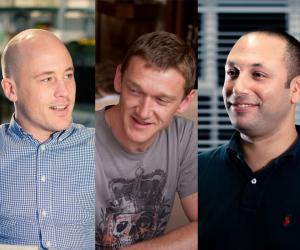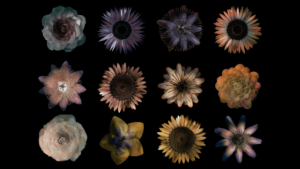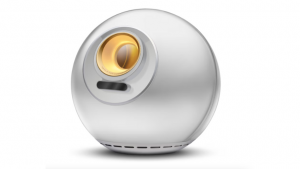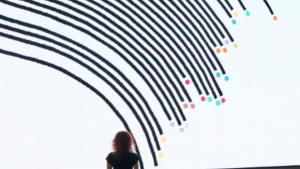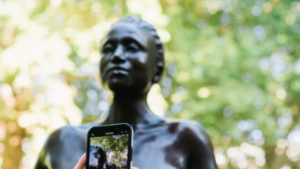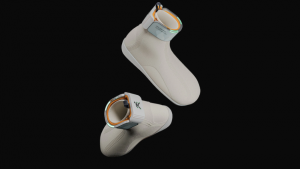United Visual Artists are an art and design practice, producing work at the intersection of sculpture, architecture, live performance, moving image and digital installation.
The creative trio behind it all will be speaking at Design Indaba Conference 2012. Matt Clark told us a little bit more about how they are pushing the boundaries of art, design, reasearch, software and engineering.
How did UVA get started?
UVA was founded by myself (Matt Clark), Chris Bird and Ash Nehru. We had worked on projects together before UVA was established, mainly working in the live performance arena as independent freelancers. In 2003 the opportunity came about for us to design a stage show for Massive Attack. It was both conceptually and technically a very ambitious show but we managed to pull it off. From that point we decided to start UVA.
What are the major challenges, if any, you have to deal with in the work you do?
There are challenges with every project that we embark on, but we enjoy them as solving problems is what makes design interesting. One of the biggest challenges we face is human behaviour. People are often at the centre of what we do and most of our work encourages some sort of public participation. The problem is that you really can't prepare for every outcome and some behaviours are completely unexpected. There's also a cultural aspect to this problem, the way people interact with our work can vary from country to country. For example, people in Japan can be receive our work very differently to people in France, even when showing the same piece. Every time we show a work we learn something new about human behaviour which then informs the next work.

What do you want people to take from your work?
It really depends what type of work it is, but generally we hope to evoke an emotional response, to engage with people's senses so they experience something more than just pleasing aesthetics. This may be something meditative or something more sinister. Also, we live in an era where we are bombarded with visual culture instantly accessed through the internet.
Art and design is now instantly throw away, so it's great to have the opportunity to put people in the moment within a real environment.
How do you typically go about working on a project?
UVA is comprised of many talented individuals; there's no two people with the same background or education. We have made a point of keeping the skill set diverse as it often leads to new types of work. It's a part of our ethos. The process is a collaborative one, but there's also space for people to develop their own ideas within a project. Getting that balance is not always easy, but it generally works for us. Everyone gets an opportunity to communicate their own ideas, but when we decide on a direction of a work the responsibility to execute it is distributed to individuals with skills that are best suited to that project.

Where do your ideas and inspiration come from?
Inspiration can come from science, nature, or collaborations with other artists like musicians for example. We have regular outings in London set by individuals in the studio, some recent visits have been to Lottolab Studio, which is the world’s first public perception research space, a trip to The Grant Museum of Zoology at the UCL and a digital fabrication show at the Aram Gallery.

What has been your favourite project to date?
This is a difficult question, but seeing Volume come to life in the V&A courtyard was definitely an amazing moment. Observing people's reaction to that work was very uplifting.
The installation worked on so many levels and seemed to engage with people from all walks of life.
That kind of inclusivity is important to us. We are also fond of the first Massive Attack show that we designed because that is where UVA started.
The field(s) that you work in is very dynamic – any thoughts on its future?
In recent times, digital technology has changed the way we communicate with one another and to the rest of the world. Digital devices have increased social interaction but its mainly in the virtual domain.
We believe that digital technologies can be adopted to bring people together in the physical world too. Human interaction in the real world is vital to how we understand each other.
So this is where we will be concentrating our efforts, working in fields that bring people together with the hope of creating new types of social experience.










